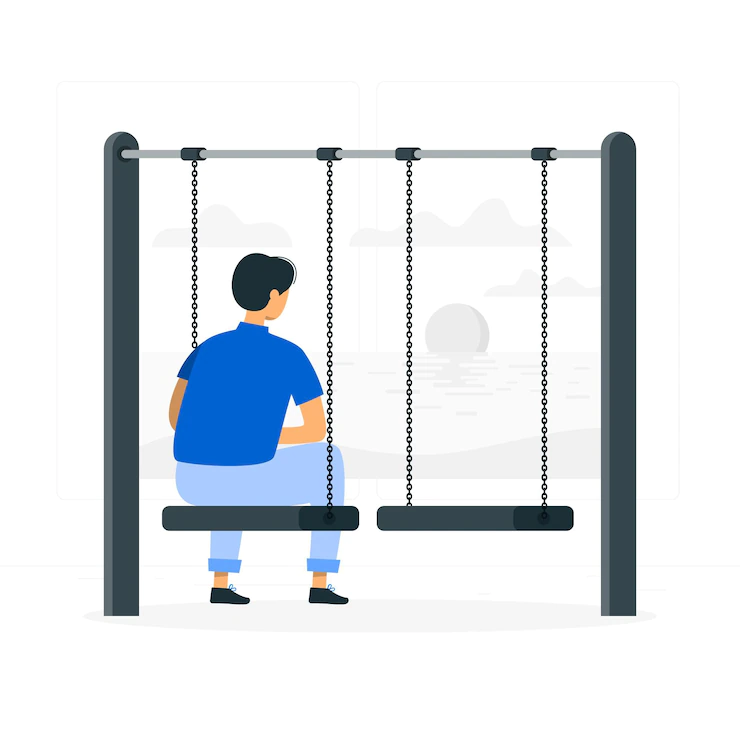5 Things You Should Know
Being sad is a normal reaction to difficult times in life. But usually, the sadness goes away with a little time. Depression is different—it is a mood disorder that may cause severe symptoms that can affect how you feel, think, and handle daily activities such as sleeping, eating, or working. Depression is more common among women than men, likely due to certain biological, hormonal, and social factors that are unique to women.
This fact sheet contains an overview of five things that everyone should know about depression in women.
1. Depression is a real medical condition.
Depression is a common but serious mood disorder. Depression symptoms can interfere with your ability to work, sleep, study, eat, and enjoy your life. Although researchers are still studying the causes of depression, current research suggests that depression is caused by a combination of genetic, biological, environmental, and psychological factors. Most people with depression need treatment to feel better.
You can’t just ‘snap out’ of depression.
Well-meaning friends or family members may try to tell someone with depression to “snap out of it,” “just be positive,” or “you can be happier if you just try harder.” But depression is not a sign of a person’s weakness or a character flaw. The truth is that most people who experience depression need treatment to get better.
If you are a friend or family member of a woman with depression, you can offer emotional support, understanding, patience, and encouragement. But never dismiss her feelings. Encourage her to talk to her health care provider, and remind her that, with time and treatment, she can feel better.
Most people with depression need treatment to feel better.
If you think you may have depression, start by making an appointment to see your health care provider. This could be your primary doctor or a health provider who specializes in diagnosing and treating mental health conditions (for example, a psychologist or counsellor). Certain medications, and some medical conditions, such as viruses or a thyroid disorder, can cause the same symptoms as depression. A health care provider can rule out these possibilities by doing a physical exam, interview, and lab tests. Your health care provider will examine you and talk to you about treatment options and next steps.
Talking to Your Health Care Provider About Your Mental Health
Communicating well with your health care provider can improve your care and help you both make good choices about your health. Read about tips to help prepare and get the most out of your visit.
2. Depression can hurt—literally.
Sadness is only a small part of depression. Some people with depression do not feel sadness at all. A person with depression also may experience many physical symptoms, such as aches or pains, headaches, cramps, or digestive problems. Someone with depression also may have trouble with sleeping, waking up in the morning, and feeling tired.
If you have been experiencing any of the following signs and symptoms for at least two weeks, you may be suffering from depression:
- Persistent sad, anxious, or “empty” mood
- Feelings of hopelessness or pessimism
- Irritability
- Feelings of guilt, worthlessness, or helplessness
- Decreased energy or fatigue
- Difficulty sleeping, early morning awakening, or oversleeping
- Loss of interest or pleasure in hobbies and activities
- Moving or talking more slowly
- Feeling restless or having trouble sitting still
- Difficulty concentrating, remembering, or making decisions
- Changes in appetite or weight
- Thoughts of death or suicide, or suicide attempts
- Aches or pains, headaches, cramps, or digestive problems without a clear physical cause that do not ease even with treatment
Talk to your health care provider about these symptoms. Be honest, clear, and concise—your provider needs to know how you feel. Your health care provider may ask when your symptoms started, what time of day they happen, how long they last, how often they occur, if they seem to be getting worse or better, and if they keep you from going out or doing your usual activities. It may help to take the time to make some notes about your symptoms before you visit your provider.
3. Certain types of depression are unique to women.
Pregnancy, the postpartum period, perimenopause, and the menstrual cycle are all associated with dramatic physical and hormonal changes. Certain types of depression can occur at different stages of a woman’s life.
Premenstrual Dysphoric Disorder (PMDD)
Premenstrual syndrome, or PMS, refers to moodiness and irritability in the weeks before menstruation. It is quite common, and the symptoms are usually mild. But there is a less common, more severe form of PMS called premenstrual dysphoric disorder (PMDD). PMDD is a serious condition with disabling symptoms such as irritability, anger, depressed mood, sadness, suicidal thoughts, appetite changes, bloating, breast tenderness, and joint or muscle pain.
Perinatal Depression
Being pregnant isn’t easy. Pregnant women commonly deal with morning sickness, weight gain, and mood swings. Caring for a newborn is challenging, too. Many new moms experience the “baby blues”—a term used to describe mild mood changes and feelings of worry, unhappiness, and exhaustion that many women sometimes experience in the first two weeks after having a baby. These feelings usually last a week or two and then go away as a new mom adjusts to having a newborn.
Perinatal depression is a mood disorder that can affect women during pregnancy and after childbirth, and is much more serious than the “baby blues.” The word “perinatal” refers to the time before and after the birth of a child. Perinatal depression includes depression that begins during pregnancy (called prenatal depression) and depression that begins after the baby is born (called postpartum depression). Mothers with perinatal depression experience feelings of extreme sadness, anxiety, and fatigue that may make it difficult for them to carry out daily tasks, including caring for themselves, their new child, or others.
If you think you have perinatal depression, you should talk to your health care provider or trained mental health care professional. If you see any signs of depression in a loved one during her pregnancy or after the child is born, encourage her to see a health care provider or visit a clinic.
Perimenopausal Depression
Perimenopause (the transition into menopause) is a normal phase in a woman’s life that can sometimes be challenging. If you are going through perimenopause, you might be experiencing abnormal periods, problems sleeping, mood swings, and hot flashes. Although these symptoms are common, feeling depressed is not. If you are struggling with irritability, anxiety, sadness, or loss of enjoyment at the time of the menopause transition, you may be experiencing perimenopausal depression.
Depression affects each woman differently.
Not every woman who is depressed experiences every symptom. Some women experience only a few symptoms. Others have many. The severity and frequency of symptoms, and how long they last, will vary depending on the individual and the severity of the illness.
4. Depression can be treated.
Even the most severe cases of depression can be treated. Depression is commonly treated with medication, psychotherapy (also called “talk therapy” or counselling), or a combination of the two.
Antidepressants are medications commonly used to treat depression. People respond differently to antidepressants, and you may need to try different medicines to find the one that works best. Researchers also are studying and developing other medications for depression, such as brexanolone for postpartum depression, and esketamine.
There are many different types of psychotherapy, such as cognitive behavioural therapy or interpersonal therapy. The particular approach a therapist uses depends on the condition being treated and the training and experience of the therapist. Counsellors also may combine and adapt elements of different approaches.
Depression affects each individual differently. There is no “one-size-fits-all” for treatment. It may take some trial and error to find the treatment that works best.




